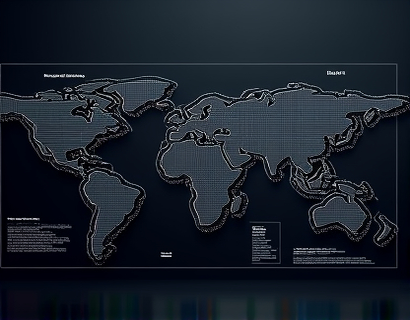Advanced Software for Graph Theory and Fluid Dynamics: Empowering Insights for Complex System Analysis
In the realm of complex system analysis, the integration of advanced software for graph theory and fluid dynamics has revolutionized the way researchers and engineers approach intricate problems. These sophisticated tools are designed to streamline data analysis, enhance visualization, and drive innovative discoveries in mathematical modeling and fluid mechanics. For professionals in these fields, the ability to leverage precise analysis and gain unparalleled insights is crucial for optimizing complex systems and pushing the boundaries of scientific knowledge.
The application of graph theory in various domains, from social networks to computer networks and biological systems, has grown exponentially. Graph theory provides a powerful framework for modeling and analyzing relationships and structures. Advanced software solutions in this area enable users to handle large-scale networks, perform complex algorithms, and visualize intricate connections. This capability is essential for understanding the dynamics of complex systems, identifying critical nodes, and predicting system behavior.
Similarly, fluid dynamics plays a pivotal role in understanding and predicting the behavior of fluids under various conditions. The simulation and analysis of fluid flow, heat transfer, and related phenomena are fundamental in engineering, physics, and environmental science. Advanced software for fluid dynamics offers robust tools for solving partial differential equations, conducting computational fluid dynamics (CFD) simulations, and visualizing flow patterns. These tools are indispensable for designing efficient systems, optimizing performance, and ensuring safety in various industries.
One of the key advantages of using advanced software for graph theory and fluid dynamics is the significant reduction in time and effort required for data analysis. Traditional methods often involve manual calculations and limited visualization options, which can be time-consuming and prone to errors. Modern software automates many of these processes, allowing researchers and engineers to focus on higher-level analysis and interpretation of results. This automation not only increases efficiency but also reduces the potential for human error, leading to more reliable and accurate outcomes.
Enhanced visualization is another critical feature of advanced software in these fields. Visualizing complex data in an intuitive and accessible manner is essential for gaining insights and communicating findings effectively. Advanced software provides a range of visualization tools, from 2D and 3D graph representations to dynamic fluid flow simulations. These visualizations help users identify patterns, trends, and anomalies that might be difficult to discern from raw data. Interactive visualizations further enhance the analytical process by allowing users to explore different scenarios and parameters in real-time.
The integration of machine learning and artificial intelligence in these software solutions has opened new avenues for research and application. Machine learning algorithms can be used to predict system behavior, optimize parameters, and discover hidden patterns in large datasets. For graph theory, AI can assist in node classification, community detection, and network prediction. In fluid dynamics, machine learning can improve turbulence modeling, boundary condition identification, and overall simulation accuracy. These advanced techniques not only enhance the capabilities of the software but also push the frontiers of what is possible in complex system analysis.
For researchers and engineers, the ability to perform precise analysis and gain unparalleled insights is invaluable. Advanced software tools provide a comprehensive suite of functionalities that cater to the specific needs of graph theory and fluid dynamics. These tools support a wide range of applications, from academic research to industrial design and optimization. Whether it's studying the spread of information in social networks, optimizing traffic flow in urban planning, or simulating aerodynamic properties of aircraft, the software offers the necessary precision and flexibility.
One of the most significant benefits of using advanced software is the facilitation of groundbreaking advancements. By providing precise and detailed analysis, these tools enable researchers to explore new theories, validate hypotheses, and develop innovative solutions. For instance, in the field of graph theory, advanced algorithms can uncover novel network structures and properties that were previously unknown. In fluid dynamics, high-fidelity simulations can reveal complex flow behaviors and interactions that are critical for designing more efficient and sustainable systems.
The optimization of complex systems is another area where advanced software shines. In graph theory, optimization problems such as shortest path, maximum flow, and network robustness can be tackled with high efficiency. Advanced algorithms and heuristics ensure that solutions are found quickly and accurately, even for large and complex networks. In fluid dynamics, optimization is crucial for minimizing drag, maximizing lift, and ensuring stability. Software tools can perform parametric studies and sensitivity analyses to identify the optimal design parameters for various applications.
Moreover, the interoperability of these advanced software solutions with other scientific computing tools and platforms enhances their utility. Integration with data management systems, programming languages, and visualization frameworks allows for a seamless workflow. Researchers and engineers can easily import and export data, leverage existing codebases, and customize the software to meet specific project requirements. This flexibility ensures that the tools can be adapted to a wide range of scenarios and applications.
The impact of advanced software on educational and research institutions is profound. Students and researchers gain access to powerful tools that enhance their learning and research capabilities. Educational software often includes tutorials, examples, and documentation to help users get started quickly. This accessibility democratizes access to advanced analytical tools, enabling a broader range of individuals to contribute to cutting-edge research and innovation.
In the industrial sector, the application of advanced software for graph theory and fluid dynamics leads to significant performance improvements and cost savings. In manufacturing, optimization of production networks and supply chains can reduce bottlenecks and improve efficiency. In energy systems, precise fluid dynamics simulations can optimize the design of power plants, pipelines, and other infrastructure. In environmental management, modeling and simulation of ecological systems help in conservation efforts and resource management.
To fully leverage the potential of advanced software in graph theory and fluid dynamics, it is essential for researchers and engineers to stay updated with the latest developments and best practices. Continuous learning and professional development are key to mastering these tools and applying them effectively. Participating in workshops, attending conferences, and engaging with online communities can provide valuable insights and networking opportunities.
In conclusion, advanced software for graph theory and fluid dynamics is transforming the way complex systems are analyzed and optimized. These tools offer precise analysis, enhanced visualization, and powerful computational capabilities that drive innovative discoveries and performance improvements. For researchers and engineers committed to pushing the boundaries of their fields, embracing these advanced solutions is essential for staying competitive and achieving groundbreaking results.










































